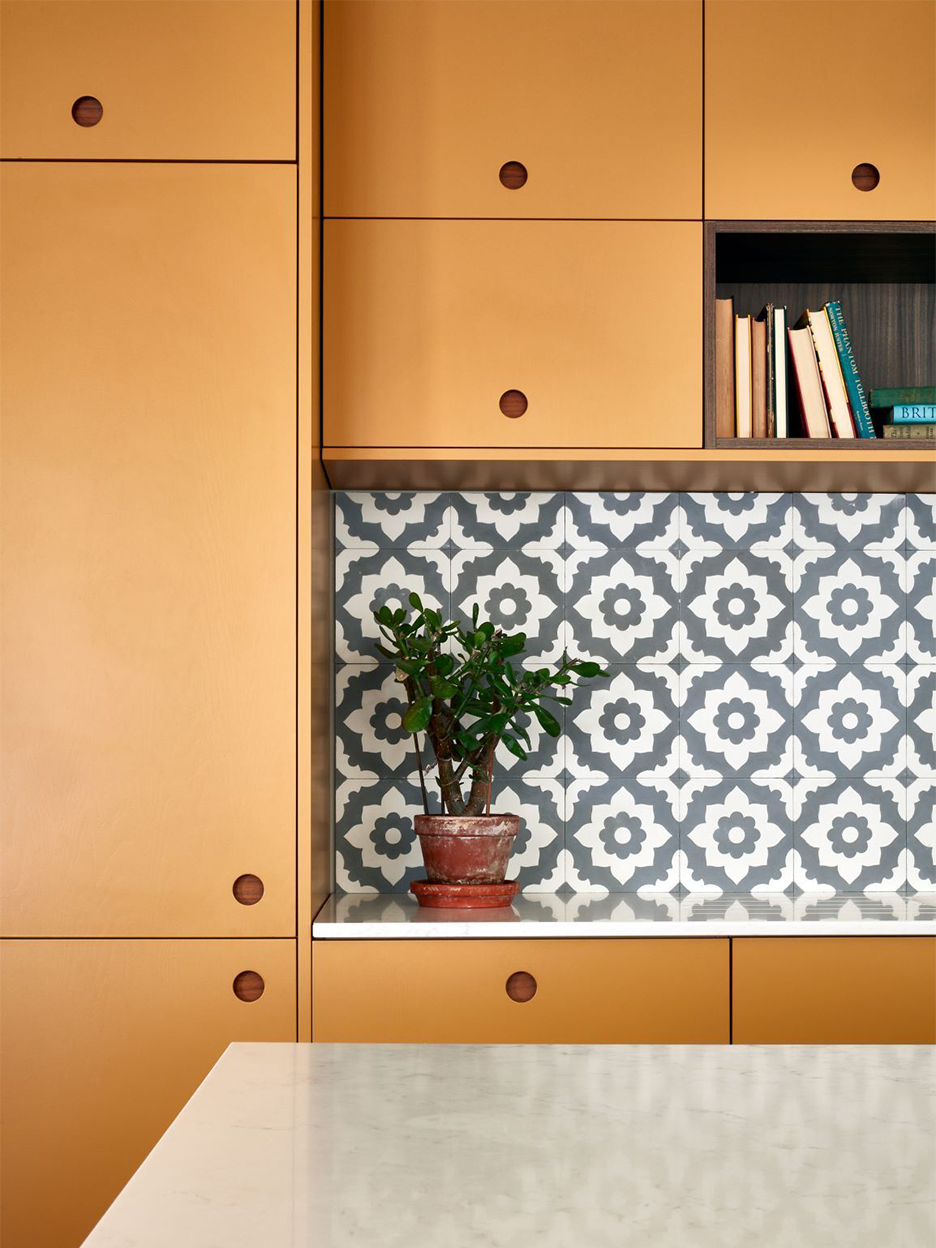We may earn revenue from the products available on this page and participate in affiliate programs.
If you ask a designer how they choose the right paint for kitchen cabinets, they won’t walk you through the color wheel. To the pros, it’s not necessarily about what’s trending—it’s all about durability. “There’s value in getting it right the first time,” explains designer Keren Richter, cofounder of White Arrow. And as New York City–based interiors pro Emma Beryl points out, the most beautiful hue in the world still won’t look good if it’s scuffed and chipped.
Ensuring that your freshly painted cabinets withstand the test of time all comes down to where you decide to shop. And with so many heritage and up-and-coming DTC paint companies out there, it can be daunting to figure out where to even start. So we asked five designers: What is the best brand of paint for kitchen cabinets? Read on for their advice.
The Best Paint Brand Overall: Farrow & Ball

The British purveyor is known for its pricey products, but there’s a reason a gallon will cost you $100. Beryl and Sara Cukerbaum, the principal designer at SLIC Design, are both fans of the company’s modern eggshell options. The coating is durable but has a matte appearance, so unlike a really shiny finish, it doesn’t spotlight scratches or imperfections. “We also love the color palette it has to offer,” says Cukerbaum (her top picks include Pavilion Gray, Green Smoke, and Hague Blue).
If you do want that polished look, Beryl is also a fan of the full-gloss finish from the brand—it’s a bit less rustic than the matte one. “My favorite color to use is Lime White because it’s a really rich taupe/off-white that is completely classic but very warm,” she says.
The Best Brand for Acrylic Paint: Fine Paints of Europe
Big-box retailers isn’t the only way to go. Richter is a personal fan of this Dutch brand that’s known for its high-quality resins and finely ground pigments. The designer, like a lot of others, notes it’s best to always go with an oil-based option, or, if you’re looking for something with lower toxicity levels, something like the company’s Eurolux product, an odorless acrylic paint that dries in about an hour and is great for using in windowless spaces.
The Best Budget-Friendly Paint Brand: Benjamin Moore

When she really wants to stay on budget, Cukerbaum goes with Benjamin Moore’s Aura Grand Entrance Satin line. “It has a little more sheen but is extremely durable and tends to hide imperfections more than the semigloss or high-gloss finish,” she explains. The company also has a tinted oil-based primer that’s worth scooping up (Richter’s favorite from the brand).
Then there’s the matter of versatility. Becky Shea likes that you can play around with the pigmentation and customize it by increasing or reducing the tones. “My favorite finish is always satin or matte,” says the NYC-based designer. On her shopping list: Light Pewter, Graphite, Midnight Blue, and Ashwood Moss.
The Best Paint Brand for Wood Stain: Rubio Monocoat
Want to spruce up your natural wood cabinets? When it comes to staining grainy varieties, Shea swears by this brand’s VOC-free, plant-based application, which leaves millwork looking fresh while highlighting the texture. Psst: You can also use it on beamwork, she notes.
The Best Paint Brand for a Plaster Look: Portola Paints
Known for its textured Roman clay and limewash finishes, this brand’s products bring that old-world character to a kitchen. “All of its color options are so spot-on and well curated,” says designer Mandy Cheng. The company’s top sellers for kitchen cabinets both happen to be soft neutrals: Figueroa (white) and Piano Room (gray).
Other Brands We Love…
The Dos and Don’ts of Painting Your Kitchen Cabinets

Don’t: Skip sampling. “Everyone uses their kitchen differently. We always recommend testing it out, as cabinets take up the largest surface area in a kitchen and they need to be easy to clean and wipe down,” says Melissa Lee, founder and creative director of Bespoke Only.
Do: Focus your efforts on sanding, “otherwise you’ll end up with chipped paint and uneven application,” says Cheng.
Don’t: Write off latex completely. Beryl notes it can provide a supersmooth finish if you’ve done a pristine job at sanding down your doors.
Do: Consider DIYing. “For a kitchen that features detailed millwork or a traditional aesthetic, I like the look of hand-painted cabinetry where subtle imperfections like drips and brushstrokes appear,” says Richter.
Don’t: Judge a chip by its cover, especially when you’re choosing a hue for base cabinets. “If you’re between two shades of a similar color, go with the darker one,” says Cheng. “Sheen tends to make them look lighter when they’re actually painted on.”
More stories like this:
Kitchen Cabinet Layouts Aren’t as Puzzling as They Seem 6 Off-White Kitchen Cabinets That Are Chic But Not Shabby How to Finally Organize Your Kitchen Cabinets—For Good This Time

